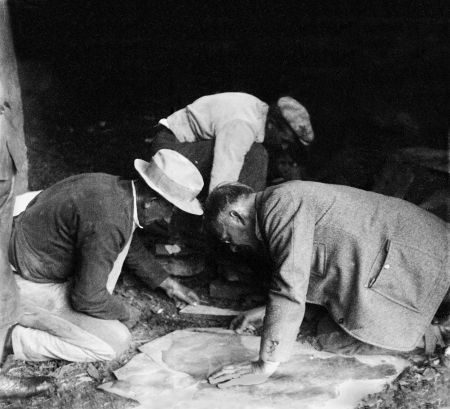From 1920 to 1938: the Zurich School
At the beginning of the twentieth century the first findings on the Swiss side began to emerge, thanks to the industrial activity of the Società Anonima Miniere Scisti bituminosi di Meride e Besano that began in 1907. Oil was produced from the rock through a complex process of dry distillation to create "Saurolo”, used for medicinal purposes as an antiseptic. Extraction of rock for processing was firstly at Tre Fontane, above Serpiano, and from 1917-1927 in Val Porina. In 1919, the Swiss palaeontologist Bernhard Peyer from the University of Zurich visited the oil factory of Spinirolo near Meride and found a well-preserved ichthyosaur limb in the material intended for distillation. From this discovery an important new phase of excavations was initiated that continued from 1924 through to 1938 at different locations across Monte San Giorgio. During this time, fossil material of numerous invertebrates, fish and reptiles was discovered, including the famous fossils Ceresiosaurus calcagnii and Ticinosuchus ferox.
The oil factory Spinirolo close to Meride at the beginning of the twentieth century (photo Archivio Sommaruga)

The “Saurolo”, oil extract from the bituminous shales and used in medicine as antiseptic (photo MCSN, R. Pellegrini)

Bernhard Peyer at work on an excavation in a gallery of the Tre Fontane mine, 1927. (photo PIMUZ)





